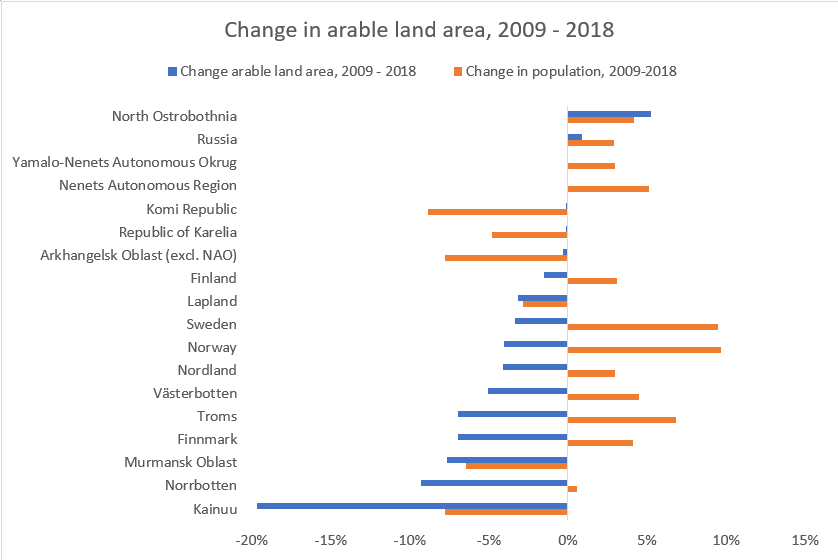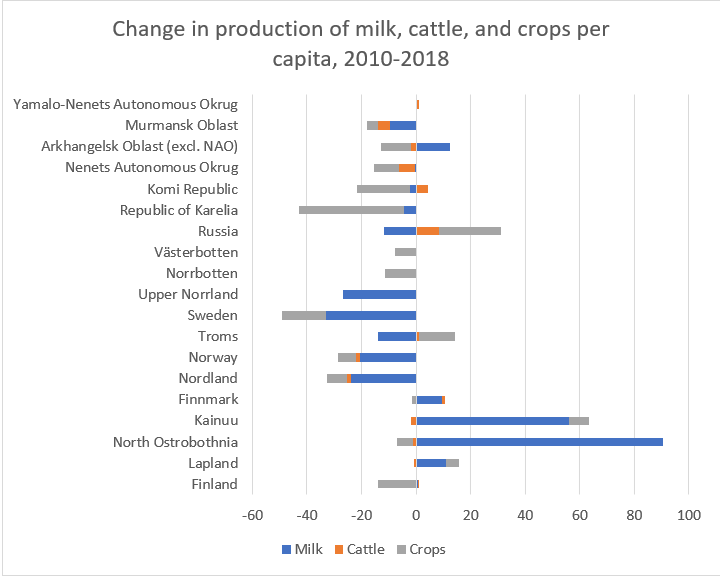Food Security in the Arctic before and after COVID-19

Alexandra Middleton is Assistant Professor at Department of Accounting at Oulu Business School.
- In times of crisis, all things unessential fade away and food that is taken for granted in terms of availability in the developed world, starts to be appreciated the most. So why aren’t we discussing more Food Security in the Arctic? asks Assistant Professor at Oulu Business School, Alexandra Middleton.
In times of crisis, all things unessential fade away. People are confined to their houses. No social interactions, no gym visits, shopping for clothes or dining out. But people still need food. Supermarkets and pharmacies are the few places on the allowed list to visit. Primal instincts take over people, we see irrational hoarding behaviour of food items and some other “not so essential” items from pulp and paper factories. Food that is taken for granted in terms of availability in the developed world starts to be appreciated the most.
The Arctic regions with their harsh climate, permafrost soil and remoteness are often dependent on imported food supplies. It works well until times of the crisis which can lead to supply disruptions of food. This brings us to the question: Why aren’t we discussing more Food Security in the Arctic?
During the Swedish chairmanship of the Arctic Council, a circumpolar project on food and water security was initiated urging to an action to monitor measurable quantitative indicators of food and water security in the Arctic over time. Further, the report of Arctic Council Sustaianble Development Group “Arctic as a Food Producing Region” outlined potential for increased production and added value of food from the Arctic, while improving economic and social conditions of Arctic communities.
There has to be a discussion on how we prepare for the next pandemic.
Still, the availability of comparable data on food security in the Arctic is very limited. In the forthcoming Business Index North report, researchers accessed the trends in food security in the Arctic. To have local food, Arctic regions need access to arable land or land suitable for agriculture. During 2008-2019 nine Arctic regions experienced reductions in arable land ranging from five to 20 percent. Positive change in arable land occurred only in North Ostrobothnia, whilst four Russian Arctic regions (Yamalo-Nenets Autonomous Okrug, Nenets Autonomous Okrug, Komi Republic and the Republic of Karelia) had zero growth.
Diminishing population in some Arctic regions can be one explaining factor, e.g., in Kainuu, Murmansk Oblast and Lapland the negative growth in population and arable land go hand in hand. The question that needs to be researched further is why do the Arctic regions with a growing population continue to lose arable land? Is it due to climate change, soil degradation or other uses of land?
Are decreases in arable land area driven by increased production efficiency? Looking at the changes in the production of crops (potato and barley), milk and cattle, we see that it is not the case for almost all the regions. Production of crops per capita increased only in Lapland, Kainuu, and Troms.
Some regions, for instance, North Ostrobothnia are already very efficient in the production of milk (938 litres per capita) and crops (561 kg per capita). Conversley, Russian Arctic regions have much smaller numbers; in Murmansk Oblast production of milk (25 litres per capita) and crops (6 kg per capita). Many factors affect productivity such as climatic conditions and soil fertility, but prevailing negative trends in locally produced and grown food are obvious.
The idea that nothing can be grown in the Arctic is outdated, some entrepreneurs break the myths and grow organic food in Alaska. In the aftermath of the coronavirus crisis, the hope is that people will pay more attention to food security and locally grown food. In Finland, the Managing Director of Federation of Agricultural Employers Kristel Nybondas raised the concern, as a result of coronavirus, that the agriculture sector in Finland will be heavily affected when 16 000 foreign seasonal workers will most likely not arrive in Finland to plant and harvest crops.
What does this teach us? In the Arctic, we need to take food security seriously. There has to be a discussion on how we prepare for the next pandemic. The Arctic communities shall have a high degree of self-sufficiency, the role of food security via agriculture, subsistence hunting, gathering, and fishing shall be mapped and strategically addressed. We need a set of comparable indicators, for instance, proportion of agricultural area under productive and sustainable agriculture. The work of the farmers, berry-pickers etc. requires appreciation and fair pay meaning that the Arctic regions could have local entrepreneurs and workforce providing for food security.



